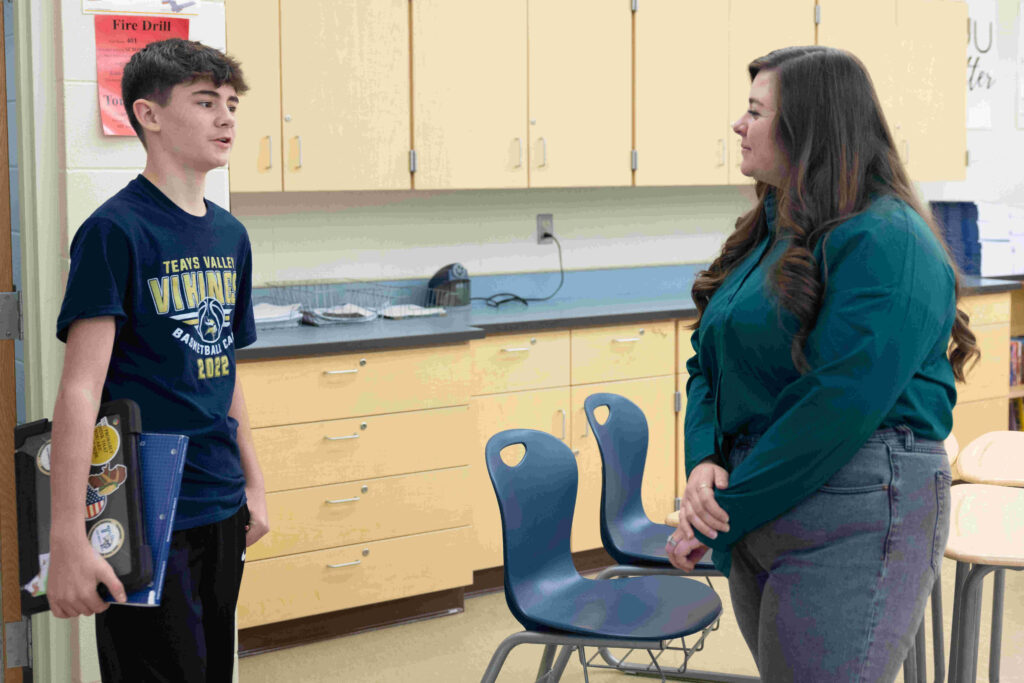November 2023

“I am not a counselor, I am a math teacher.”
“SEL is not part of the math curriculum.”
“It is just another thing.”
“How am I going to find time for this?”
As the need for social and emotional learning (SEL) in schools has become increasingly important, these are common sentiments that can be heard and felt by math teachers.
Math teachers feel the constant pressure of staying on pace, getting through the curriculum, and raising test scores. The thought of adding something else may seem impossible, especially something that seems so different from solving equations, graphing functions, or factoring quadratics.
According to the Collaborative for Academic, Social, and Emotional Learning (CASEL) website, SEL builds social and emotional skills that increase student engagement and lead to improved academic performance. CASEL is a framework for SEL that includes the following interrelated areas: self-awareness, self-management, social awareness, relationship skills, and responsible decision making. Support in each of these areas leads to increased academic achievement.
CPM teachers, you are in luck! CPM has embedded several ways to meet the SEL needs of our students. From the very core of CPM that includes collaborative learning, problem-based learning, and mixed, spaced practice, to the variety of instructional resources, CPM is built to support student needs. Here are some ways you can implement SEL in your CPM classroom seamlessly.
Self-awareness
- Give students a choice board to demonstrate their understanding of a learning target.
- Allow students to choose whether they’d like to do their Review & Preview with Desmos, online algebra tiles, or physical algebra tiles, or in their notebooks.
- Give students mild, medium, or spicy problems to check their understanding as outlined in Building Thinking Classrooms by Peter Liljedahl.
Self-management
- Use the pocket questions in each chapter to give specific, actionable feedback as you circulate throughout lessons.
- Use mixed, spaced practice to help students set goals and track their understanding on specific learning targets over time. Review & Preview problems at the end of each lesson have built-in opportunities for learning over time.
- Use the multiple representations web (situation, graph, equation, and table) to encourage students to model and solve problems in different ways.
Social awareness
- Everyone has something to contribute to the team. Give each student a sticky note. Have them write their name at the top, then pass the sticky note to the right until everyone has had a chance to write something positive to all of their team members.
- When available, use team roles for specific problems found in the Teacher Notes. Team roles give students ways to support their team’s learning and success.
Relationship skills
- Use Study Team and Teaching Strategies as outlined in the Teacher Notes. These strategies help students learn how to work together in a variety of ways for different types of tasks.
- Encourage students to work together and to never leave any group member behind. Remind students that everyone has something to contribute and all perspectives are welcome and encouraged.
Responsible decision making
- Give students opportunities to gather evidence and use data to make decisions as well as to justify solutions.
- Don’t skip the statistics chapters: the contextual problems give students the opportunity to exercise Standards for Mathematical Practice.
You may have already been using many of these practices and not considered how they support SEL! As you integrate more of the strategies and practices provided by CPM, consider how you may be supporting students in building self-awareness, self-management, social awareness, relationship skills, and responsible decision making.
Sarah Watson
sarah.watson@rps205.com